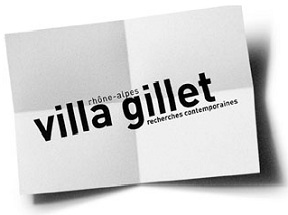The Intensive Care Unit: A Place of Technology and Myth
Cécile Guilbert writes essays, novels and literary criticism. Written with great freedom of tone, her highly personal and polymorphous work surveys the heritage of noted artists and writers. In Sans entraves et sans temps morts (With Neither Barriers Nor Time Out, 2009), she shares her views on writing in a collection of brilliantly bold, ambitious literary essays. She was awarded the prix Médicis for her essay Warhol spirit (Grasset, 2008).
In late March 2008, I had just published Warhol Spirit and finally felt free of the spectral, vampire-like Warhol presence that had haunted me for three years, when my husband Nicolas suffered “cervical cellulitis,” a gangrenous infection of the neck area following an attack from bacteria lodged in a salivary gland. After emergency surgery, he was immediately plunged into a therapeutic, long-term coma and placed in the intensive care (réanimation) unit—a unit of which I was almost totally ignorant but the “Promethean” power of which fascinated me instantly.
While Réanimation, my account of this experience, is at once a love letter and a meditation on the powers of art and medicine, the dangers of images, the curse of the imagination, time, and hope, while it tries to delve into Greek mythology and various fairy tales in which sleep and death exchange their misleading appearances against a backdrop of sweet dreams or nightmares, through the perceptions, sensations and thoughts of the narrator, it also incessantly dwells on a key point: the deeply ambiguous nature of the intensive care unit, which, because of the therapeutic procedures dispensed to the patient like subliminal messages addressed to the visitor, shares in a reality both technical and mythical. And it is this nature, the sensorial, intellectual, emotional and spiritual impact of which proved so fertile for the narrator of Réanimation, that I want to discuss today.
To enter into an intensive care unit is, first of all, to be assailed, in every sense of the word, by a jumble of prosaic perceptions that distill the hospital’s quotidian reality: raw fluorescent lights, smells of disinfectant and coffee, the humming of electrical equipment, carts full of soiled linens, the waltz of nurses, etc. Then very quickly, the patient’s isolated room signals your entrance into another physical dimension—one that is troubling in three ways.
Troubling first of all to see that intensive-care techniques magnify a hundredfold the essence of medicine: considering life not as existence, but simply bios ; treating human beings only in terms of the biological components and functions to which they are temporarily reduced: organs, cells, interactions between various physiological functions. Reality hits ten times as hard because, passive by definition, the inert, unfeeling body of the comatose patient (who is in fact under heavy, general-anesthetic-type sedation), which the nurses manipulate like a doll whose limbs they bend and straighten at will, whose hair they wash and nails they cut, is prey here to a multitude of invasive techniques that are a kind of constant “theft” of its interior, which has become a superficial “exchange where the oxygen, sedatives, and multifiber tube feeds that enter are as vital as the bloody deposits, globes urinaires, bronchial secretions, and pus that exit: a body-intersection of fluids and liquids to which nothing belongs.”
Troubling also as to the therapeutic protocol, in this case the one specific to cervical cellulitis. After making an incision in the neck to scrape the infected tissues and eliminate those that are dead, the 20-centimeter long wound is kept open under a collar of bandages so that the patient can be treated morning and night in the operating room, where they continue to scrape out dead tissue, insert drains, and put on healing bandages. More specifically, hands swathed in latex slip into the body, pull away and distend the skin like rubber, slide up to the temples and down to the thorax—a procedure that makes the impossible possible: to see the inside of a living body as if it were an anatomical écorché.
Lastly, and above all, troubling to be confronted with the hyper-technicality of the cutting-edge medicine employed in this unit: respirator, tubes, leads, probes, perfusions, captors, electric cables, electronics housings, oxymeters, scopes—a complete technical assortment at the crossroads of the inhuman and the superhuman. Because a dear one, who not so long ago was still endowed with sight, speech, movement, expression (that is, of the mind and the soul), has become a “body-machine,” almost a robot, a sort of cyborg or zombie that spontaneously brings to mind all sorts of images and memories: Frankenstein, Métropolis, etc. A shock, then, to be faced with this unheard-of hybridization of the organic (warm, bloody, carnal) and the technological (cold, disembodied) that pulls the subject toward depersonalization, toward “desubjectification,” toward the pure physicality of his or her body. Which in no way negates the fact that the healthcare personnel prove to be unswervingly concerned with the patient’s comfort, integrity, dignity, etc.
But to paraphrase Heidegger, who claimed that “there’s absolutely nothing technical about technology,” which is not only a “means” but a “way to reveal” in relation to “truth,” the intensive care unit is not only an instrumental place, a site where care is provided, it is also a meta-physical place where all sorts of sacred images and myths are called to mind.
If we follow Giorgio Agamben, who defined “religion as that which subtracts things, places, animals and persons from common use to transfer them into a separate sphere,” the intensive care unit seems to be a sacred place within the hospital because it is special, separate, and governed by specific protocols, whether we’re talking about reduced visiting hours or its bunker-like nature (like the operating room and the morgue).
And because it’s the place of suspension between life and death, a passageway between the conscious and the unconscious, or between presence and absence, intensive care is the place for all sorts of metaphysical questions, in the form of oxymora. What’s at stake here, for the patient—a dying life? A living death? What then is life? and death?
Relying on mechanical respirators and tracheal intubation techniques (because breathing is the only vital function the ceasing of which for just a few minutes leads to death), intensive care—or reanimation—works from a universal invariant. Doesn’t “reanimate” come from the Latin root anima, which means “soul,” “breath of life”? And just as the Greek psyche means the same as the Hebrew naphesh, the Sanskrit prâna, and the Chinese qi, this pneumatic principle, synonym of vital energy, is an original, divine principle in every civilization, every religion (monotheist or animist), and every spiritual practice (Hindu, Buddhist, Kabbalistic, Sufi, etc.). What happens, then, to the soul when natural breath disappears and consciousness takes its leave? Can the patient think? Dream? This remains a mystery.
Moreover, a thaumaturgist descended from humanity’s earliest doctors who, from Imhotep the Egyptian to Hippocrates the Greek, possessed divine powers, the intensive-care physician revives all sorts of mythical figures. A cross between Faust and Don Juan, s/he confronts death and denies it, giving life back to one who is losing or has lost it, contradicting Nature and going beyond it, holding the colossal power to resuscitate ((From the Latin resurgere, which means “to rise again,” “to return from death to life,” resuscitate is the equivalent of the French word “réanimer.”))--like Asclepius, the Greek god of medicine killed by Zeus, who found this exorbitant power too subversive, but also like God bringing Lazarus back to life.
Like Orpheus, the resuscitator is also a person who at each instant descends into Hell to bring up Eurydice’s chariots. A mythological imprint that extends as far as Osiris, the eloquent name of the Egyptian god resuscitated by his wife’s breath and, in French hospitals, of the portable ventilator that accompanies the “resuscitated” when they have to be taken to other departments for tests.
Not to mention the images the intensive care unit calls up with all these bodies stretched out: cathedral effigies, dead Christs, etc.
It is thus at the height of the biologicalization, even animalization, of the human species, that intensive care, by “lifting off” toward other symbolic representations, constantly poses the question of the essence of man and the humanist vocation of medicine.
Cette ressource a été publiée dans le cadre de la quatrième saison du festival "Walls and Bridges", organisé par la Villa Gillet, qui s'est tenu à New York du 11 au 20 octobre 2012.
Pour citer cette ressource :
Cécile Guilbert, The Intensive Care Unit: A Place of Technology and Myth, La Clé des Langues [en ligne], Lyon, ENS de LYON/DGESCO (ISSN 2107-7029), janvier 2013. Consulté le 24/09/2025. URL: https://cle.ens-lyon.fr/anglais/litterature/entretiens-et-textes-inedits/the-intensive-care-unit-a-place-of-technology-and-myth



 Activer le mode zen
Activer le mode zen![[title-image]1332154742367[/title-image] guilbert_1358846600895-jpg](https://cle.ens-lyon.fr/anglais/images/guilbert_1358846600895-jpg)



